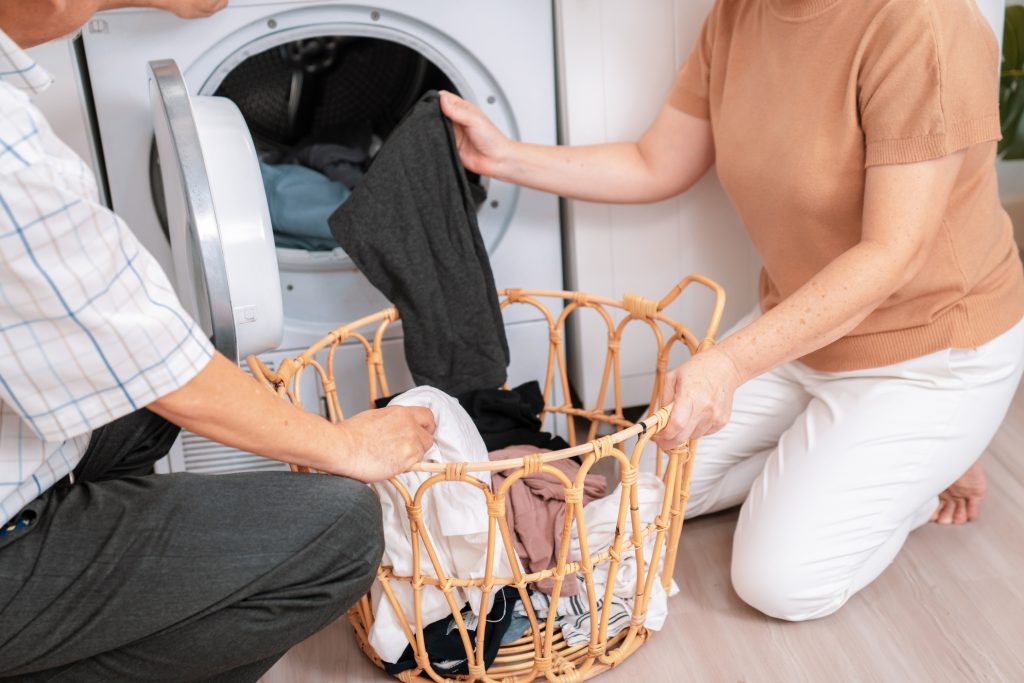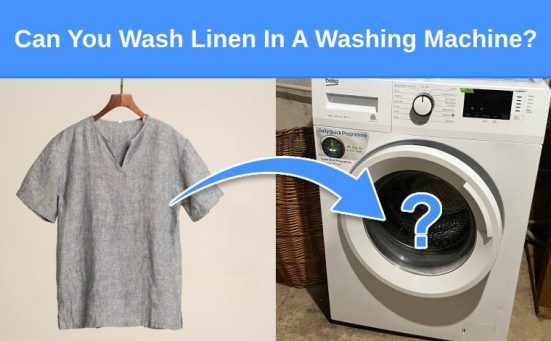
How Many Washing Machine Rinse Cycles Should You Use?
If you own a modern washing machine it often appears to be a complicated appliance. With so many wash cycles and programmes to choose from it can be difficult to know which one is best.
But, once you get to know your new appliance, getting your clothes clean is really quite a simple process. All you need to do is add detergent, select the correct setting and temperature and press the start button.
The machine then proceeds to wash, rinse and spin your laundry for you. Once the cycle has completed, all you need to do is remove your clothes from the drum and get them dry. This means that generally, one rinse cycle is typically sufficient.
One of the questions we often get asked here at CheckAppliance is do I need to run an extra rinse cycle? If this is something that you’re wondering, keep reading.
In this article I explain the purpose of the extra rinse cycle as well as the importance of ensuring your laundry is rinsed properly.
Why The Rinse Cycle Is So Important On A Washing Machine

When you put your clothes in your washing machine, the most important thing to you is to get them clean. And yes, getting the clothes clean is important. However, with so many different types of detergent available nowadays, getting the clothes clean is a pretty easy task.
If the detergent isn’t fully rinsed away from those clothes, the trapped detergent can stain the fabric. But worse than this is the prospect of trapped detergent in clothes causing skin irritations.
This is especially true for those of us that suffer from skin conditions or allergies like eczema.
What Does The Rinse Cycle Actually Do?

The way a washing machine works is in three stages which are;
- The Wash Cycle
- The Rinse Cycle
- The Spin Cycle
When you press start on your washer it mixes water with detergent to wash the dirt and grime from your clothes. As the wash cycle comes to an end, the water drains from the drum and is replaced with clean water.
This clean water cycle is the rinse cycle and is designed to remove any detergent and dirt from the clothes. As the clean water enters the drum, the drum turns ensuring that clean water rinses each and every item.
There’s no detergent added at this stage, it’s just clean water. Once the rinse cycle has finished the washer drains the water away and the spin cycle commences. The spin cycle is designed to remove as much water as possible from the now clean clothes and is dependent on the spin speed of the washer.
How Long Does The Rinse Cycle Run For?

The rinse cycle on an automatic washing machine typically runs for anywhere between 15 to 20 minutes and consists of two rinse and drain cycles, the second one following directly after the first. The actual duration of the rinse cycle varies from manufacturer to manufacturer and can even vary between models from the same manufacturer.
Other factors that can alter the length of the rinse cycle include;
- The size of the wash load
- The amount of detergent used
- The water pressure in your home
The rinse cycle is a crucial part of the laundry process in an automatic washing machine. The laundry will not be clean if it is full of detergent and the remnants of any dirt or grime.
Excess detergent can stain clothes and leave them feeling stiff. Plus as I already said, it can cause skin allergies to flare up in those with sensitive skin.
Another point that is often overlooked is that detergent residue in clothes can cause damage to some fabrics. So it’s really important that your laundry gets a proper rinse.
It’s also worth noting that the rinse cycle is barely ever mentioned in the advertising blurb for new washing machines. They generally promote features that save water and energy but never mention the quality of the rinse cycle.
In some cases the reduced water usage can necessitate an extra rinse cycle to remove excess detergent and dirt remnants.
Does A Regular Wash Load Need Extra Rinsing?

As I said earlier, the rinse cycle is typically a part of a regular wash cycle. Which means you only usually need the one rinse cycle in many cases.
The rinse cycle on your washing machine is designed to remove any residual soap and dirt from your laundry. This should be enough to leave your laundry feeling soft and looking and smelling clean.
Additionally it should last longer because all of the detergent and fabric softener has been removed.
With that said, on modern washing machines, you have the option for a second rinse. This is useful under the following circumstances;
- If you have used too much detergent
- If the detergent produces a lot of suds
- If you have washed a particularly large wash load
- If you’ve washed large absorbent items like towels or blankets
- If you or a family member has sensitive skin
All you need to do is select the “extra rinse” cycle before the wash cycle starts. If your washer has this function it can be a great time saver.
However, if your machine doesn’t offer an extra rinse option, all you need to do is wait until the cycle finishes and select an additional rinse cycle followed by a drain and spin cycle.
How Many Extra Rinses Does The Wash Load Need?
There are not really any occasions when a wash load needs more than one extra rinse cycle. The water from two rinse cycles should be more than sufficient to remove any remaining dirt or soap suds and fabric softener.
Selecting a cold rinse cycle will of course be easier on your finances than running two full wash cycles. Plus it’s only necessary if the clothes actually need a second rinse. If not, it’s just a waste of water, money and energy.
Is The Rinse Cycle The Same As A Wash Cycle?

A rinse cycle is not the same as a wash cycle. The wash cycle is designed to wash your laundry and requires detergent to do the job. The detergent is mixed with the water and goes through the clothes as the drum agitates.
After the wash cycle has completed and the water is drained away, the rinse cycle begins. During the rinse cycle there is no detergent used, it’s just clean water (typically cold water) to wash all of the dirt and detergent out of the clothes.
It’s like when you wash a car, the wash cycle is when you apply the soapy water and the rinse cycle is when you spray the hose over the car to remove the soap suds.
Is The Rinse & Spin Cycle The Same As The Drain & Spin Cycle?
The rinse & spin cycle is not the same as the drain & spin cycle. The rinse & spin cycle uses clean water to rinse the clothes and remove any remaining dirt and soap suds. It then drains the water away and spins the clothes to remove excess water.
The drain & spin cycle misses out the rinse part. In other words, the drain & spin cycle simply spins the drum to remove excess water and then drains that water away.
SEE ALSO: Quick Wash Vs Normal Washing Machine Cycle – What’s The Difference?
Frequently Asked Questions
The number of rinses that a washing machine does varies from model to model. However, a typical wash cycle on an automatic washing machine consists of a 20 minute or so wash cycle followed by a rinse period of around the same duration consisting of two rinse cycles in close succession.
The extra rinse cycle is a great choice when washing absorbent items like towels and blankets as it can help to remove excess detergent. However, it is generally not needed for a regular wash load.
The purpose of the rinse cycle is to rinse the washed clothes with clean water to remove any remaining dirt or soap suds away.




